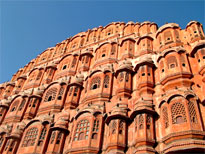Nepal Info
In Nepal, Hinduism and Buddhism are the two main religions. The two have co-existed down the ages and many Hindu temples share the same complex as, Buddhist shrines. Hindu and Buddhist worshippers may regard the same god with different names while performing religious rites.
Though Nepal is the only Hindu Kingdom in the world, many other religions like Islam, Christianity, and Bon are practiced here. Some of the earliest inhabitants like the Kirats practice their own kind of religion based on ancestor worship and the Tharus practice animism. Over the years, Hinduism and Buddhism have been influenced by these practices which have been modified to form a synthesis of newer beliefs. As a result, visitors to this country may often find the religious practices in Nepal difficult to follow and understand. But this does not prevent one from enjoying the -different traditional ceremonies and rituals of Nepalese culture. It is indeed a totally new experience of religious fervour.
Nepal has several ancient pilgrimage sites. Nepal is also the Gateway to Kailash Mansarovar, the mythical abode of Lord Shiva. Devotees from various parts of Nepal and India throng the temples during special festivals. Even though weak infrastructure renders some places hard to reach, efforts are being made on national level to develop and promote some popular sites. Some well-known pilgramage sites are: Barah Chhetra, Halesi Mahadev, Janakpur, Pathibhara, Tengboche in East Nepal; Manakaman, Gorkha, Lumbini, Muktinath, Gosainkunda, Tansen, Kathmandu Valley in Central Nepal; and Swargadwari, Khaptad Ashram in West Nepal. Pilgrimage sites of Nepal like Muktinath and Gosainkunda make popular trekking destinations. Tours to these sites are encouraged for the novelty they provide in terms of nature and culture. Each temple is attached to a legend or belief that glorifies the miraculous powers of its deity. Kathmandu Valley is home to the famous Pashupatinath Temple, Swayambhu Stupa and several other famous temples. Hundreds of famous temples are located in and around the Kathmandu Valley.
In Nepal festivals are celebrated by nepallis in their own way with joy, some of the festivals are :- Buddhist celebrations are just as thick on the ground, and include Mani Rimdu (November) in Solu Khumbu, Buddha Jayanti (May) in Kathmandu, and Losar (Tibetan New Year) (February) in Swayambhunath, Jawlakhel and highland communities. Nepal's festive calendar is hectic. Dasain, celebrated nationwide in October, is the most important of all Nepalese celebrations and features the biggest animal sacrifice of the year. Running a close second is Tihar (November), but unlike Daisan, animals are honoured rather than slaughtered. Hindu festivals number the Haribodhini Ekadashi (November) and Maha Shivaratri (March), both celebrated in Pashupatinath, the Gai Jatra (August) in Kathmandu and the Krishna Jayanti (August/September) in Patan. Other festivals celebrated nationally include the water-tinged Holi (March) and Chaitra Daisan (April), which is yet another bad day for animals.Delhi - Kathmandu - Patan - Chitwan - Pokhara - Dhulikhel - Kathmandu - Delhi/ Mumbai (10 Nights / 11 Days)
Delhi - Kathmandu - Pokhra - Chitwan - Kathmandu - Delhi (08 Nights / 09 Days)
Delhi - Kathmandu - Delhi (04 Nights / 05 Days)
Delhi - Shimla - Manali - Chandigarh - Delhi (07 Nights / 08 Days)










